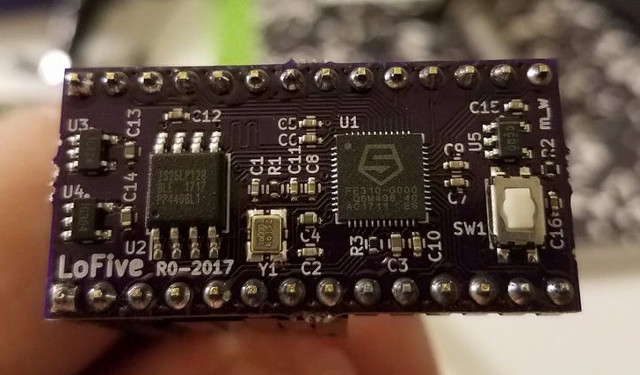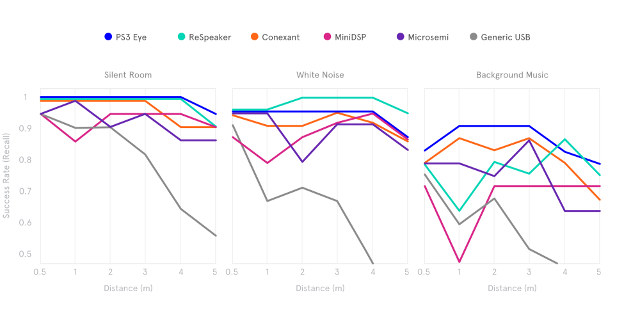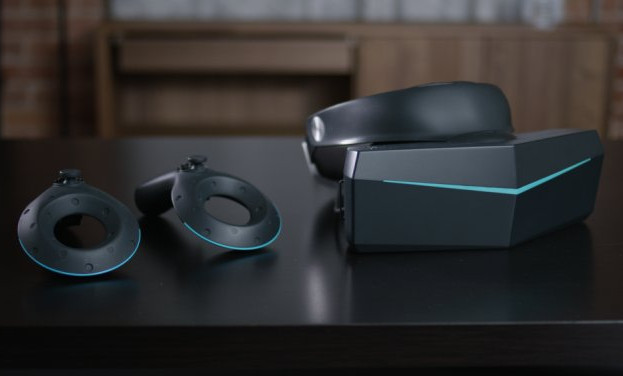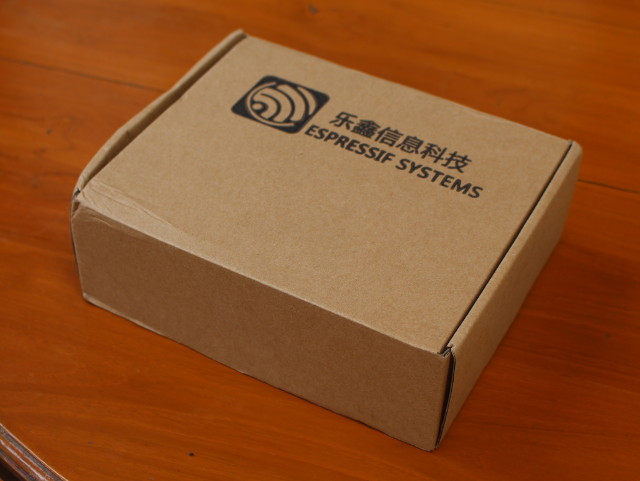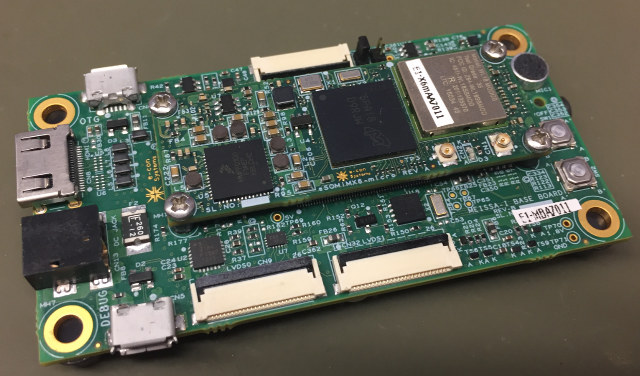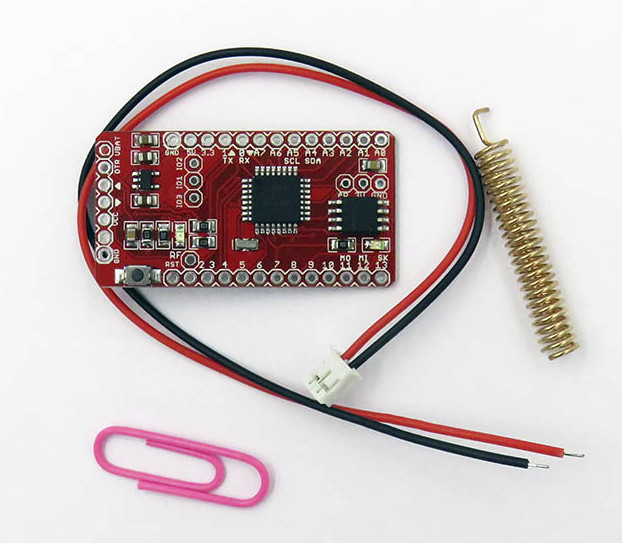You’ve probably heard about Volkswagen emission scandal that surfaced last year. Basically, the company used some tricks to detect when the vehicle was under test and ran in low emission mode during those tests, and normally on the road emitting up to 40 times over the U.S. pollution limits. Cheating is quite easy because testing is performed indoor with the car wheels on rollers as shown in the picture below, so all the software had to do is detect whether the car was actually moving forward to select the right mode. Several executives involved in the decision to rig the emissions tests got charged as expected, but what happened to the engineer who implemented the code following his boss(es)’ request? Reuters reports that he’s been sentenced to 40-month prison term, and a $200,000 fine, after pleading guilty early on, and collaborating with authorities. His lawyer argued that Jiang (Engineer surname) […]
LoFive is a Tiny Open Source Hardware Board based on SiFive FE310 RISC-V Open SoC
Do you remember HiFive1? It’s an Arduino compatible board based on the SiFive FE310 open source RISC-V SoC. Michael Welling has now started working on LoFive board using the same processor, but in a much smaller & breadboard friendly form factor. LoFive board specifications: MCU – SiFive Freedom E310 (FE310) 32-bit RV32IMAC processor @ up to 320+ MHz (1.61 DMIPS/MHz) Storage – 128-Mbit SPI flash (ISSI IS25LP128) Expansion – 2x 14-pin headers with JTAG, GPIO, PWM, SPI, UART, 5V, 3.3V and GND Misc – 1x reset button, 16 MHz crystal Power Supply – 5V via pin 1 on header; Operating Voltage: 3.3 V and 1.8 V Dimensions – 38 x 18 mm (estimated) The board will be programmable with Arduino IDE + Cinco just like HiFive1 board. The board is also open source hardware, so beside the aforelinked info on Hackster,io, you’ll also find the KiCAD schematics, PCB layout, and […]
Those Charts Show The Benefits of Microphone Arrays for Hot Word Detection
Since I started looking more into smart speakers, including DIY ones such as the I made with Orange Pi Zero board + Google Assistant with a single microphone, I was told about the importance of microphone arrays, but so far, I had not seen any clear study or data about that. That changed today, as I came across a review of mic arrays by the makers of Snips Voice Platform. They tested five arrays connected to a Raspberry Pi 3 with the system, and also added a generic USB microphone to the mix. The results speak for themselves… In that experiment, they measured the rate at which a hot word was successfully detected by incrementally increasing the distance between 0.5 meters to 5 meters (16 ft), and for each distance, repeating the hot word 25 times at 3 second intervals using pre-recording to keep the voice level constant, and the […]
8K VR Headsets Are Coming, Starting with Pimax 8K
The user experience with current virtual reality headsets is far from ideal, because of a lack of content, the “screen-door effect“, and the screen resolution is not quite high enough since it’s so close from our eyes. 8K virtual reality headsets, with 4K per eye, should make the experience both more realistic, and minimize the screen-door effect. One of the first such products will be Pimax 8K VR headset. It’s still a prototype that the company will showcase at IFA Berlin 2017, but we already know that beside a twin 3840 x 2160 pixel display, it will also have a 200 degree field of view, and 18 ms MTP (Motion-to-Photon) latency. The headset will ship with two motion controllers to track your movements. With the kind of processing power required to handle 8K, it’s not a standalone headset, and instead will rely on (Windows) computers with NVIDIA GeForce GTX980 or […]
Google Releases ARCore Augmented Reality Preview SDK for Android
Augmented reality has been a thing for many years, and Qualcomm released an Augmented Reality SDK working with Android as soon as 2011, but Google has only just released a preview of ARCore augmented reality SDK for Android in order to bring AR capabilities to existing and future Android phones. ARCore works without any additional hardware (e.g. no 3D depth camera needed such as Tango), relies on Java/OpenGL, Unity or Unreal engines, and focuses on three things: Motion tracking – ARCore determines the position and orientation of the phone as it moves using both the phone’s camera to observe feature points in the room and IMU sensor data, in order to keep virtual objects accurately placed. Environmental understanding – This handles placement of AR objects on surface like a table or a floor, with the SDK detecting horizontal surfaces using the same feature points it uses for motion tracking. Light […]
A First Look at ESP32 PICO Core Development Board Powered by ESP32-PICO-D4 SiP
Last week, I wrote about ESP32-PICO-D4 system-in-package (SiP) that contains ESP32 WiSoC, 4MP SPI flash, a crystal oscilloscator and some passive components in a single 7×7 mm package in order to allow smaller designs based on ESP32. The company noticed the post, and asked me whether I’d be interested in receiving “some development boards based on ESP32 PICO”, an offer hard to refuse :), and within a couple of days I received the package below. So I ended up with 10 identical development kits, the company probably thought it was no worth paying for DHL to only send one or two development boards… The boards may also be part of some contests… We’ll see 😉 So let’s take two, and have a closer look at “ESP32_PICO_Core_Board_V3″… It comes with two rows of 20 pins with access to all I/Os, and features three main chips: ESP32-PICO-D4 SiP, AMS1117 voltage regulator, and Silabs […]
Save Power, Hibernate Your Embedded Linux System
This is a guest post by Tharma Rajan G, Project Lead, e-con Sytems. What is the best way to save power consumption of your embedded Linux system? Is there any way to save max power and resume operation ? Yes. It is ‘hibernate’ mode, one of the Power Modes in Linux. This article talks about how we utilized this ‘hibernate mode’ in our Reference Platform Kit Meissa-I with eSOMiMX6-micro SOM. Meissa-I is a dual board solution that features eSOMiMX6-micro Computer on Module & carrier board. Meissa-I development board runs Linux and Android Marshmallow (under development). eSOMiMX6-micro is based on Dual/Quad core ARM CortexTM-A9 based CPU @ 800MHz/Core. It has 1GB LPDDR2 and 4GB eMMC FLASH (expandable upto 32GB). The eSOMiMX6-micro module also has the Wireless LAN and Bluetooth module. Linux Power Modes Power Management is a key feature in embedded Linux system and there are two types for implementing the […]
$6.10 Loraduino Board Combines LoRa and Atmega328P MCU
We’ve previoulsy seen low costs SX1278 LoRa modules @ 433 MHz which you could connect to your own board, but Electrodragon is now selling Loraduino board with an Atmega328P MCU and SX1278 for just $6.10 / 5 Euros plus shipping, and using a layout similar to Arduino Pro Mini. Loraduino specifications: MCU – Microchip / Atmel Atmega328P MCU with Arduino pro mini bootloader Storage – 16Mbit SPI flash for data LoRa Semtech SX1278 IC with 433mhz, or 470mhz central frequency 10 km max range 20dbm max power rate (configurable by software) Tx current: 120 mA @ + 20 dBm; 90mA @ + 17dBm; 29mA @ + 13dBm Data Rate – 1.2K to 300Kbps with FSK; 18 bps to 37.5Kbps with LoRa Expansion SX1278 Lora: leadout for pins IO1, IO2, IO3 Atmega: 14x digital input/output pins (including 6x PWM outputs), 6x analog inputs (TBC) Misc – Programmable LED (D7), power LED, […]



